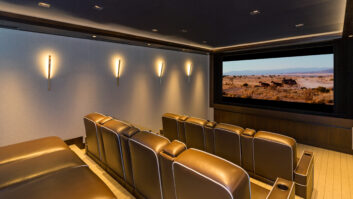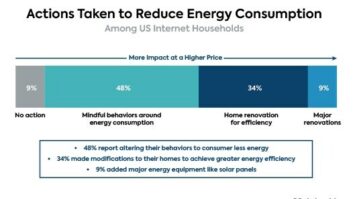
Sam Cavitt ([email protected]) is president of Paradise Theater in Kihei, Hawaii, and Carlsbad, California. Designing private theaters is a great business. It provides the opportunity to collaborate with talented professionals providing a service that adds a significant dimension of entertainment possibilities to our clientele. Often we are presented the challenge of delivering more than entertainment. One such case is a professional screening room in a private residence.
These projects come about under a number of scenarios, predominantly involving film industry clientele. However, not all screening room projects have the same parameters. The determining factors generally reside in the identity of the client. A client who is primarily concerned with production, such as a sound designer or producer, will have a different set of priorities than a star, whose priorities differ from those of an executive. In some cases, a client may wear many hats and have more disparate and demanding requirements. It is essential that these be identified up front.
The resulting criteria for each project will generally fall under one of the following categories:
A professional production facility in the client’s home
These rooms require the acoustical performance found in top studios with noise criteria at or below NC15, with documented accurate and balanced room acoustics. They require power management compliance with industry standards, and audio systems must conform to professional playback and monitoring standards. They must be capable of supporting audio engineering equipment, configuration per industry organizations (including approval and certification), and video systems compliant with studio standards, with the capability of displaying industry content– both current release and production work–to name a daunting few. Additionally, we have found that these rooms will also be used personally, requiring the integration of consumer playback, simplified control, and the not-so-trivial task of integrating an acceptable décor.
A professional screening room at home
This application needs to meet the same acoustical, audio and video performance criterion; however, the engineering and production equipment, and integration thereof, will not be necessary. We find that aesthetic sensibilities are also more demanding in these rooms.
Home entertainment with professional capabilities
This scenario is much like the one above, but the emphasis is on the personal entertainment capacity. As such, the control system and integration with media such as games and music take more priority, and the handshake between the pro systems and the consumer electronics must be carefully engineered. Comfort and aesthetics will play a bigger part as well. Each of these types of rooms will have individualistic priorities and varying levels of acceptable compromise. In some cases, professional playback will trump the home entertainment considerations.
This is Hollywood, so you’ll have to get out your A-game and expect to be challenged and held to the highest level of expectations. A public screening facility
Not to be confused with a commercial cinema, these kinds of rooms are being designed to serve the film community in various public and private venues. Such venues will have many of the demands related in the scenarios above, with the added complexity of safety and access as required in public spaces. Other commercial considerations such as sound reinforcement, teleconferencing, media integration, and other requirements will also exist.

For typical integrators crossing this professional line, there will be some added complexities. Some notable challenges include access and familiarity with professional systems and equipment, knowledge of professional standards, difficulties in blending engineering requirements with residential design aesthetics, budget, and “higher Hollywood expectations.”
Standards, connectivity, and control often have significant differences between commercial and consumer electronic devices. Additionally, many of these standards and specifications are not readily available to integrators, and require significant research to obtain. In some cases, criteria established for commercial spaces do not translate well into residential, albeit professional-level, spaces. Furthermore, commercial and professional systems may not be readily available to integrators. This will affect profitability as well as support capability. As noted above, both professional and consumer content will need to be supported. This means integrating both types of equipment, and engineering a system that is not available off the shelf.
Eric Powell of Paradise Theater contributed to this article







